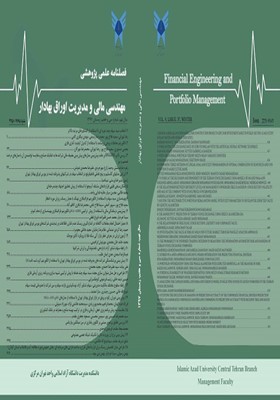Design a Risk Allocation Model for Construction Projects (EPC) for investment asset in public sector. (Case study: Guilan water and sewage industry).
Subject Areas : Financial engineeringbahman rasouli 1 , sina kheradyar 2 * , bahman banimahd 3
1 - PhD student, Accounting Department, Rasht Branch, Islamic Azad University, Rasht, Iran
2 - Assistant Professor, Department of Accounting, Rasht Branch, Islamic Azad University, Rasht, Iran
3 - Associate Professor, Department of Accounting, Karaj Branch, Islamic Azad University, Karaj, Iran
Keywords: Guilan, Delphi method, Risk allocation, Construction projects. Decision- making,
Abstract :
Construction projects in Guilan Water and sewerage has high levels of risk due to their complex and dynamic environment. There are no suitable risk allocation models for Guilan construction industry based on article 23 processing budget and planning law 1352 clause about (EPC).There is the cost of project and plan for design risk allocation model. This work endeavors to propose and apply a Risk Allocation Model (RAM), based on a simple mechanism for allocating critical risks to the responsible party in the project. In addition, the RAM aims to compare among projects, which is more risky. The construction of RAM is based on Delphi method for 41 risk factors, over 10 groups, are identified and used in the model development. All factors are analyzed and weighted by deploying Weighted Risk Factor (WRF) which combines the effect of a risk factor probability and its effect on time and cost. The model results identified the most important risk factors to be allocated to owner, contractor or shared between them, as well as the suitable risk action for each factor. The model is applied on a real case study through two construction projects in Guilan to test the validation. A complete comparison between the two projects is presented and a decision is introduced for contractor. The results emphasized that the model is easy to understand and use by the parties involved in construction projects. Further, it is flexibility in the event of variables.
_||_

